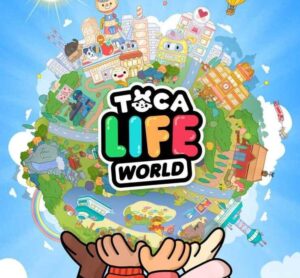Unveiling the Horrors of Sardinia: A Deep Dive into Saturnalia
Popular Now
 Call of Duty
Call of Duty
 R.E.P.O
R.E.P.O
 God of War Ragnarök
God of War Ragnarök
 FIFA 23
FIFA 23
 NBA 2K24
NBA 2K24
 The Legend of Zelda
The Legend of Zelda
 Genshin Impact
Genshin Impact
 Sonic the Hedgehog™ Classic
Sonic the Hedgehog™ Classic
 League of Legends
League of Legends
 Grand Theft Auto V
Grand Theft Auto V 
In the vast and ever-expanding landscape of horror video games, few titles manage to stand out with a truly unique voice. Developers often rely on established tropes and jump scares to deliver a terrifying experience. However, Saturnalia, a roguelite survival horror game from the Italian studio Santa Ragione, dares to break the mold. This game is not just an adrenaline-fueled chase; it is an exquisite, atmospheric masterpiece that weaves together Sardinian folklore, a stunning art style, and a dynamic narrative into a truly unforgettable experience. It has garnered significant attention from critics and gamers alike for its distinctive approach to the genre, making it a compelling case study in innovative game design.
The game’s premise is deceptively simple: you and three other characters are trapped in the isolated village of Gravoi during a haunting ritual. Yet, the layers of complexity and dread quickly reveal themselves. As a player, you must navigate the labyrinthine streets, solve puzzles, and uncover the village’s secrets, all while being relentlessly hunted by a mysterious, monstrous figure. The tension is palpable, and the sense of vulnerability is constant, as you have no means of fighting back. The primary goal is survival and escape, but the true reward is the rich, unfolding story. The game’s design is a powerful fusion of genres, blending the strategic planning of a roguelite with the atmospheric dread of classic survival horror.
 A Visual and Auditory Feast: The Art of Dread
A Visual and Auditory Feast: The Art of Dread
The first thing that will strike any player of Saturnalia is its breathtaking art style. The visuals are inspired by stop-motion and rotoscoping film techniques, giving the game a hand-drawn, “sketched” look that is both beautiful and unsettling. The entire game world feels like a living, breathing work of art. The monochromatic palette, punctuated by splashes of vibrant, neon color, creates a dreamlike, almost hallucinatory atmosphere. The darkness is a character in itself, and your only reprieve from it is the limited supply of matches you carry. The flickering light of a matchstick cuts through the oppressive blackness, creating fleeting moments of clarity that are as terrifying as they are brief. This unique artistic direction is not just a cosmetic choice; it is integral to the gameplay, forcing you to rely on sound and memory as much as sight.
The sound design is equally impressive. The game’s score, influenced by 1970s Italian giallo horror films, is a masterclass in building tension. Eerie electronic music and reinvented ancient sounds permeate the environment, changing with the proximity of the creature. The subtle sounds of rustling papers, distant chanting, and the heavy breathing of your character contribute to an immersive soundscape that will keep you on the edge of your seat. This impeccable combination of visual and auditory design elevates Saturnalia far beyond the typical horror game, creating a truly sensory experience that stays with you long after you’ve stopped playing.
 Roguelite Mechanics and Narrative Ingenuity: A Dynamic Experience
Roguelite Mechanics and Narrative Ingenuity: A Dynamic Experience
What truly sets Saturnalia apart is its innovative use of roguelite mechanics. The village of Gravoi is an elaborate maze, and each time all four of your characters are caught, the entire layout of the village is procedurally reconfigured. This isn’t a simple reset; your narrative and puzzle progress is maintained, but you must re-learn the new map. This mechanic, praised by many critics, ensures that no two playthroughs are exactly alike. It instills a genuine sense of fear and desperation, as the familiar comfort of a known path is stripped away. It forces you to be constantly vigilant and to use your wits to navigate the shifting landscape. It also adds significant replay value, encouraging players to return to the game to uncover all of its secrets.
The narrative is another area where the game excels. You play as four different characters—Anita, Sergio, Claudia, and Paul—each with their own intertwined backstory and unique abilities. The story unfolds as you find clues and solve puzzles, and the game’s non-linear progression allows you to piece together the events at your own pace. The dialogue is rich and a compelling element of the storytelling. The game’s lore is steeped in Sardinian folklore, lending an authentic and deeply creepy foundation to the supernatural horrors you encounter. The storyline delves into themes of family secrets, ancient rituals, and the conflict between tradition and progress, creating a deeply engaging and thought-provoking experience that goes beyond simple monster-hiding. The narrative is not just a backdrop; it is the driving force of the entire game.
Saturnalia is a bold, artistic, and intellectually stimulating horror game that prioritizes atmosphere and narrative over cheap thrills. Its breathtaking visuals, chilling sound design, and ingenious roguelite mechanics make it a standout title in the horror genre. While some players might find the survival elements less challenging than in other titles, the game’s strength lies in its ability to create a deep and lasting sense of dread through its unique and ever-changing world. It is a must-play for fans of atmospheric horror and anyone looking for a truly unique and memorable gaming experience.
The game’s combination of narrative depth and replayability sets a new standard for indie horror titles. The decision to make the town’s layout change on each death is a high-risk, high-reward move that pays off, ensuring that the game remains fresh and terrifying. The game’s strong connection to real-world folklore provides a tangible sense of history and gravitas, making the horrors feel more grounded and believable. In a market saturated with predictable horror clones, Saturnalia stands as a testament to the power of artistic vision and innovation. It is a game that is not only a joy to play but also a work of art to be admired.









 A Visual and Auditory Feast: The Art of Dread
A Visual and Auditory Feast: The Art of Dread Roguelite Mechanics and Narrative Ingenuity: A Dynamic Experience
Roguelite Mechanics and Narrative Ingenuity: A Dynamic Experience